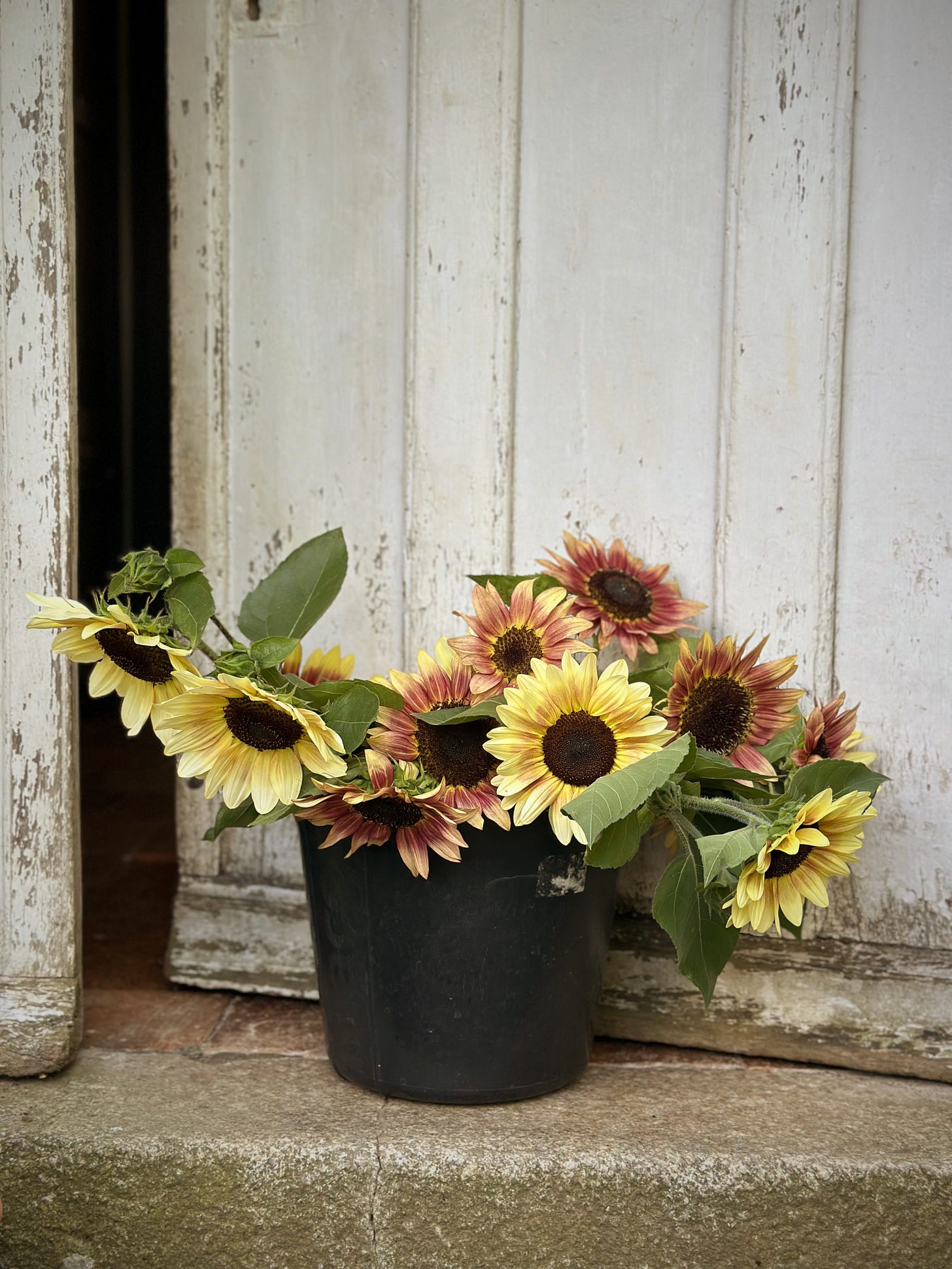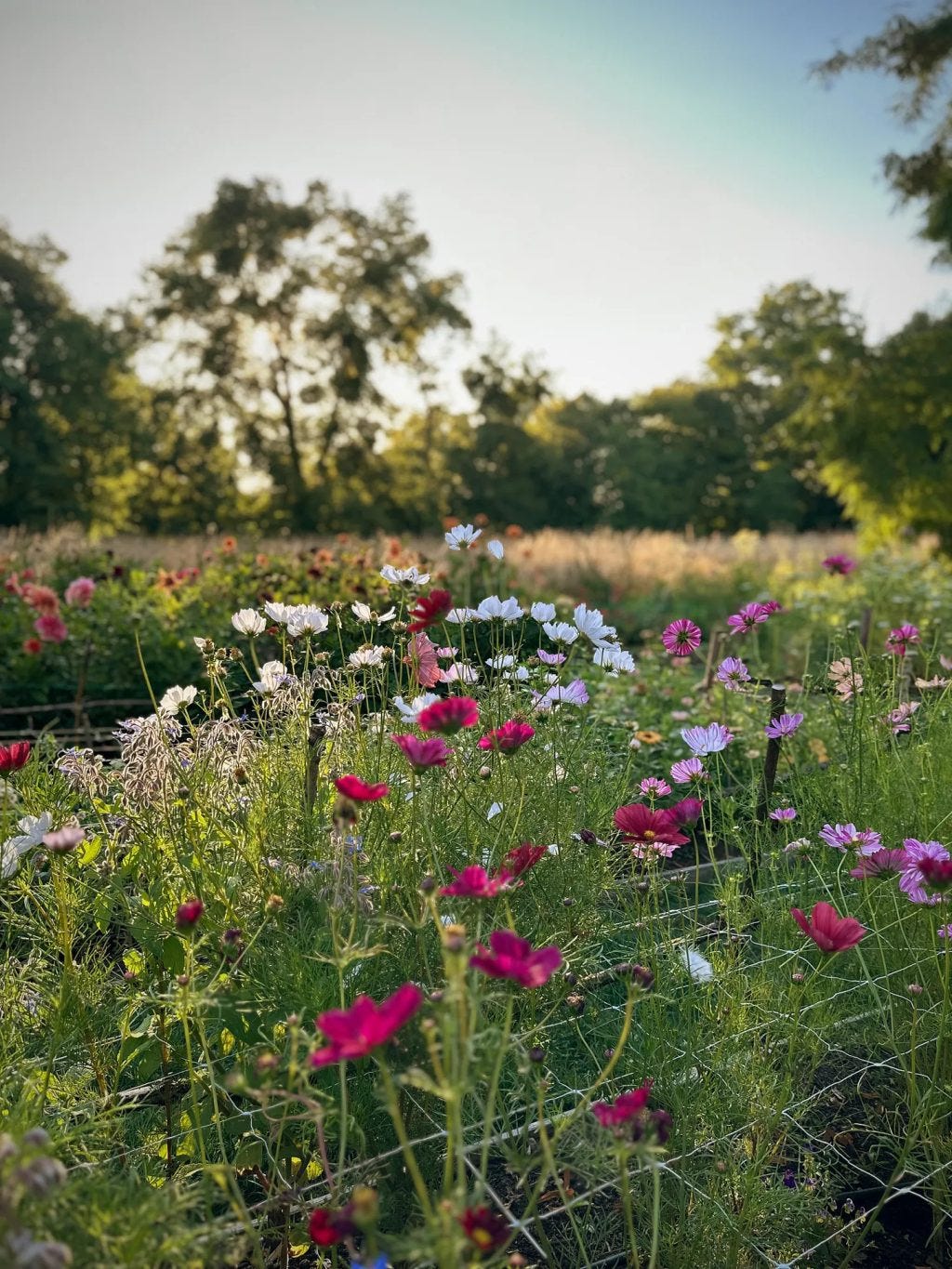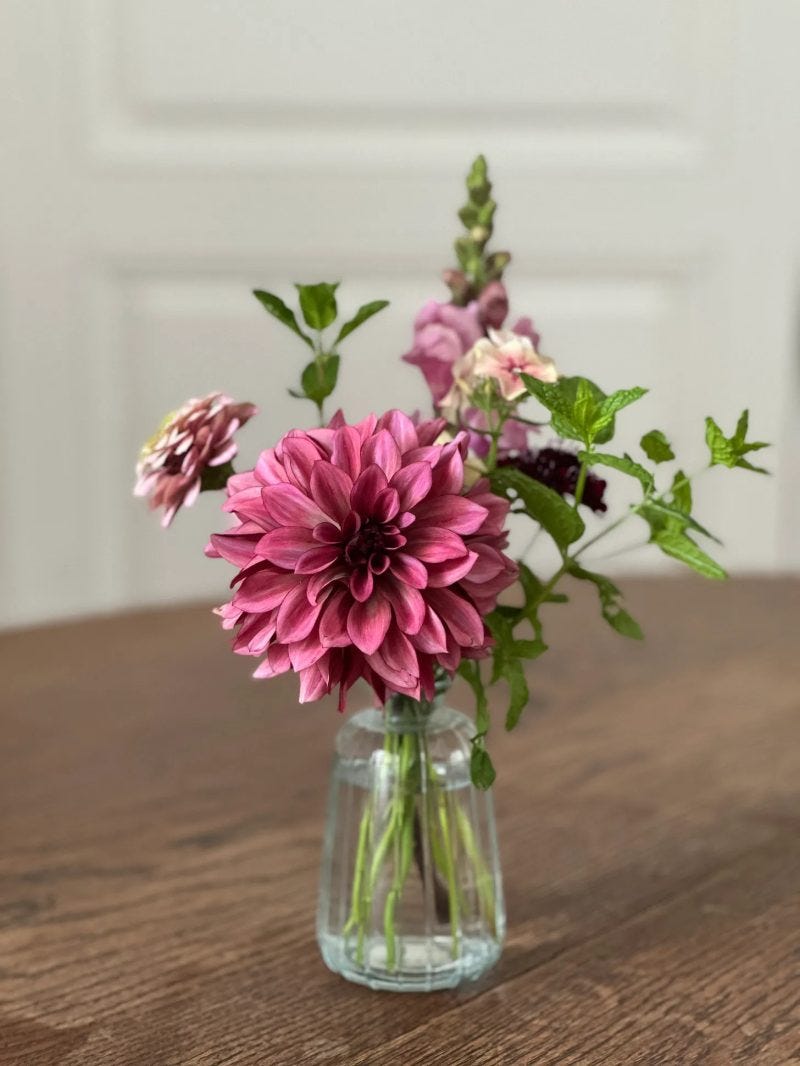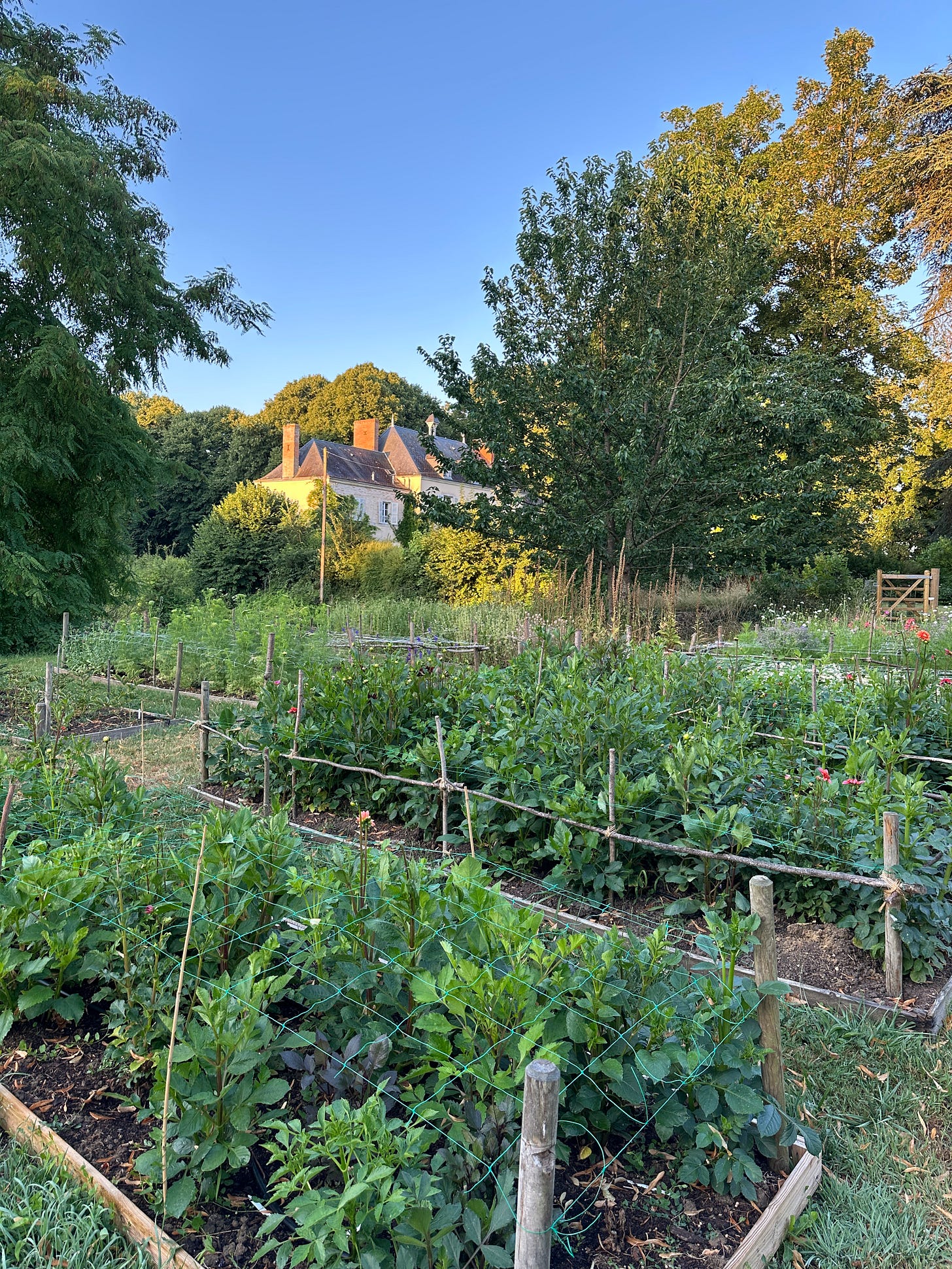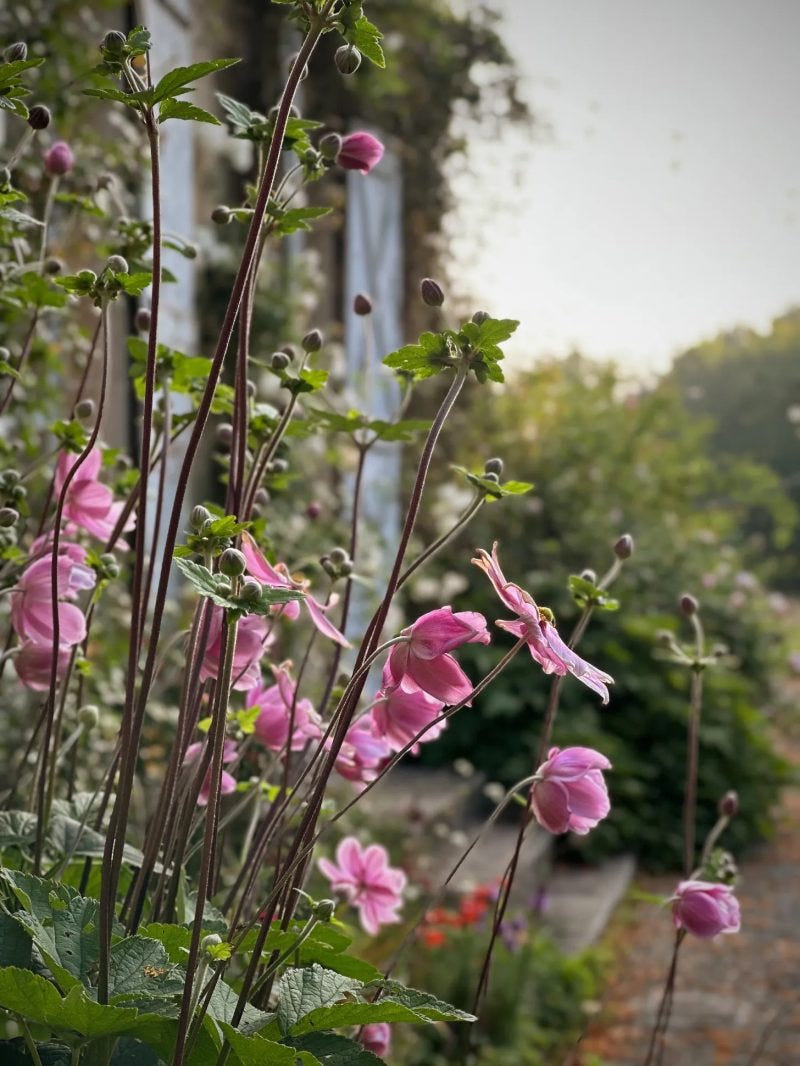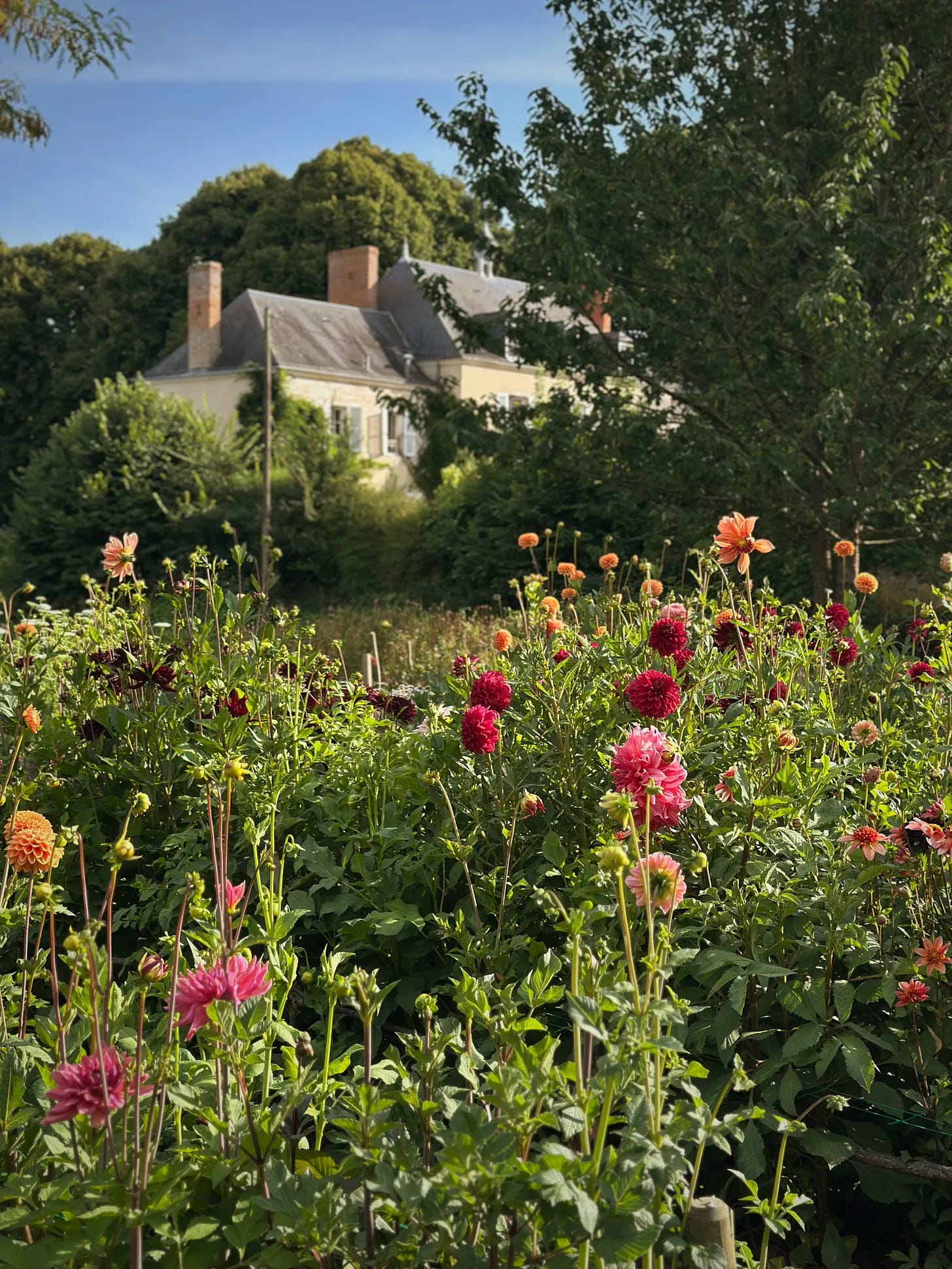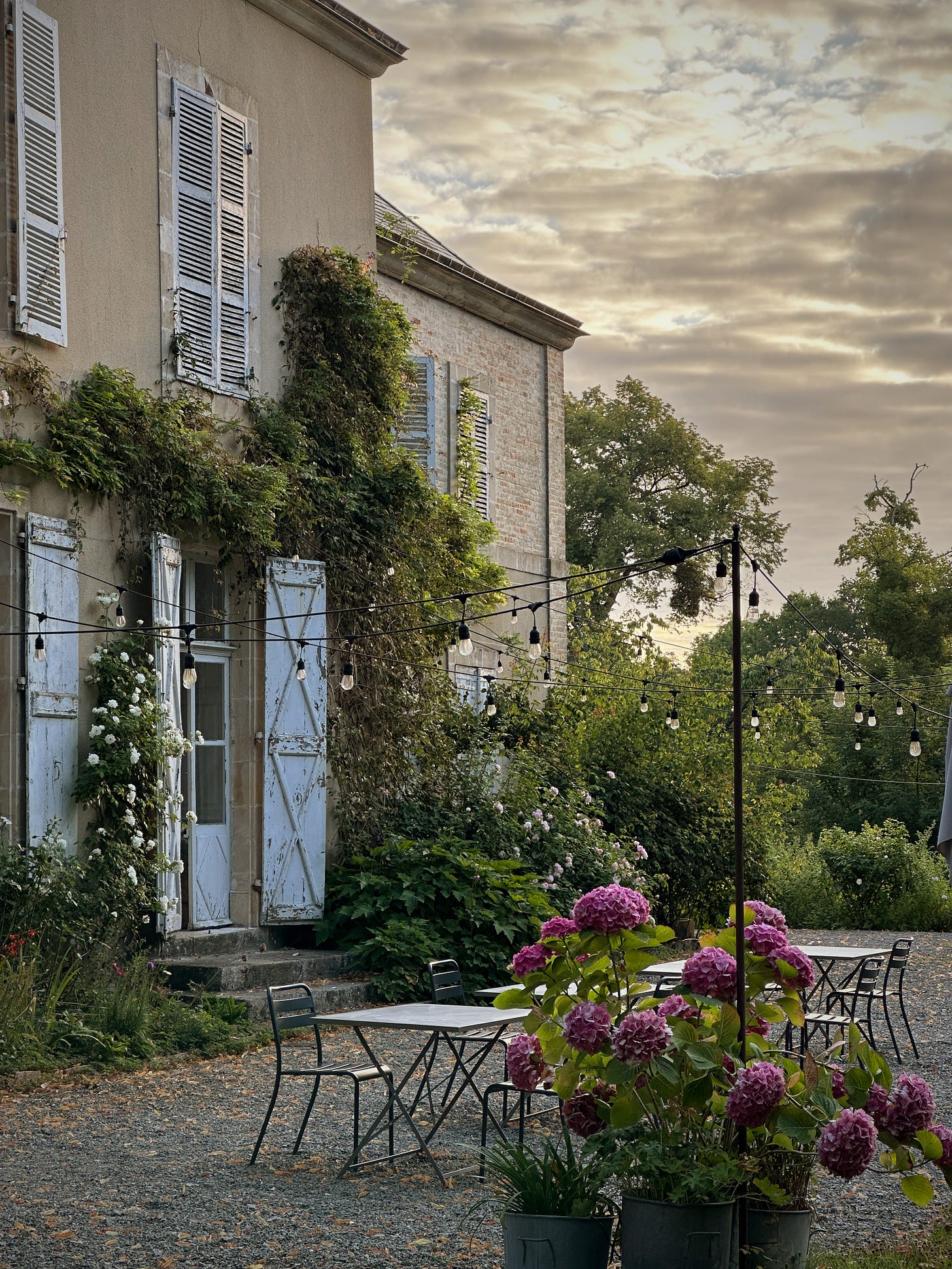There’s a mellowing in July, the brighter colours of early summer fading and softening through the long sunny days. July swept in over hot golden fields and mercifully blew out again on a cool northerly breeze. The temperatures dipped down to a normal Sarthoise summer, and both the garden and I were grateful.
The heat sent some flowers over fast; the sweet peas crisping in days, and brought others out early; sunflowers stretching their necks upwards, turning their smiling faces and basking in sunshine. They’re such happy flowers, and this year I finally picked all the right varieties, so that once the main flower has been cut, the side shoots take over and give me some more.
The rain came and brought the colour back into the parched grass, the bleached stems greening up again in a matter of days. The dry earth fizzed with happiness as it soaked up the downpours. A welcome drink that helped the cherry plums swell and the apples in the orchard get even rounder.
It’s a month of abundance in July, the harvest begins, a rumble of tractors and combines as the farmers bring in the wheat. Golden fields shorn from hedgerow to hedgerow, which themselves are ripening, hawthorn berries turning blush pink, hazelnuts in their little green purses, sloes beginning to blush blue and walnuts hanging heavy. The only hedgerow-harvest we’re short of this year is blackberries, our springtime tidy leaving only a few precious bushes that are yet to ripen.
While the totally tangerines led the way, the other dahlias have quickly followed, petals springing open from tight buds, only the newest varieties taking their time to get going, but they’ll come, the plants getting sturdier with each passing week. I love how dahlias change as the season moves on, colours and shapes shifting depending on the weather. Café-au-lait is always better later on, growing with more depth and character. The tangerines mellow a little too, their faces opening out and their oranges fading towards apricot. Night silence with its dusky shades of blackberry dusted with deep pink is still stealing my heart – for now, it’s early in the season after all, and there’s still time for something else to take pride of place.
Finally, my precious Floret zinnias are in flower, seeds smuggled in from England and nursed carefully all spring. Little flower girl, Victorian wedding and Dawn Creek peach, all shades of pink, apricots and taupes. Their petals feel like parchment, or as if they’re woven from fabric, their ruffles getting frillier as you leave them to grow. I wonder if we’ll be able to buy seed again? I’ll try my best to save my own, but the colours won’t come true; they’ll be a mystery mix, the pollinators flying from flower to flower, merging the colours from one to another.
I let the foxgloves go to seed, putting up with the crispy brown wands of the faded flowers for weeks as they ripened. I shook them over the bed as I cut them back. The tiny brown seeds are scattering down over the dry soil. Tim helped me to spread a new layer of compost over the beds, and already the tiny plants are starting to grow. In the gaps in between, I’ve sown sweet rocket and sweet Williams, an experiment to see if they’ll take and to see if I can keep some interest in this bed after the foxgloves go to seed. I might plant some perennials here, too, to make the most of the space and stop it from filling with weeds later in the summer.
My ranunculus corms are drying, spread out in trays, their triffid-like tentacles shrivelling and shrinking. I feel nervous about them this year. I lifted them a little late, and I’m sure I’ve missed a good few in the ground. They’re my first flower crop and without them the house will look a little bare in April and May, so I’ve ordered some new corms and a few new varieties for next spring – Amandine porcelain, pastel and chamallow, elegance viola, stritato bianco, purple jean and quite a few colours in between. I’ll sow some in the autumn and some early next spring, in the hopes of making them last a good few months.
It seems funny to be thinking of next year already, but the gardening year keeps turning, and the plotting and planning for one harvest starts as another is just getting going. The Japanese Anemones are already in flower, and the first tiny cyclamen are scattered through the grass until the draping branches of the false acacia tree – both signs for me that summer is twisting away, August edging in, the days just beginning to shorten inch by inch.
The swallows are still here, though, swooping over the waving grasses of the side meadow and skimming the surface of the lake, their chattering loud and gossipy. I listen to them as I work in the cutting garden, pulling weeds and willing the flowers to grow. The scabious are covered in butterflies; black and white scarce swallowtails, red admirals, peacocks and orange tips skipping and hopping from flower to flower. Their wings open and close as they bask in the sun, sipping nectar from the flowers, which to me at least, are the worst-smelling in the garden.
There is still plenty more summer to be had, so many more flowers to come, the whole of August to bask in and the early September days of Autumn to look forward to. I love this time of year, the colours, the ripening, the abundance of it, all the hard work paying off in armfuls of flowers. And then the chance to do it all again, learning, succeeding and failing each year as I go along.
Garden jobs for August
Remove the lower leaves from the dahlias to encourage air flow around the plants and keep them happy until the first frosts.
Continue deadheading roses, dahlias, snapdragons, and scabious to encourage more flowers.
Harvest the Nigella seed crop, then clear the bed and apply mulch.
Pick some hydrangea heads to dry for the winter
Feed the tomatoes
Decide whether to order more bulbs for the spring – do I need more tulips? More Daffodils?
All images copyright Rebecca Jones.
Do you have a Garden in France? How is your garden different from Rebecca’s? Share your experiences below.
Introducing Contributor, Rebecca Jones:
Visit her Contributor Page — Explore more of Rebecca’s work [note: link not live yet]


